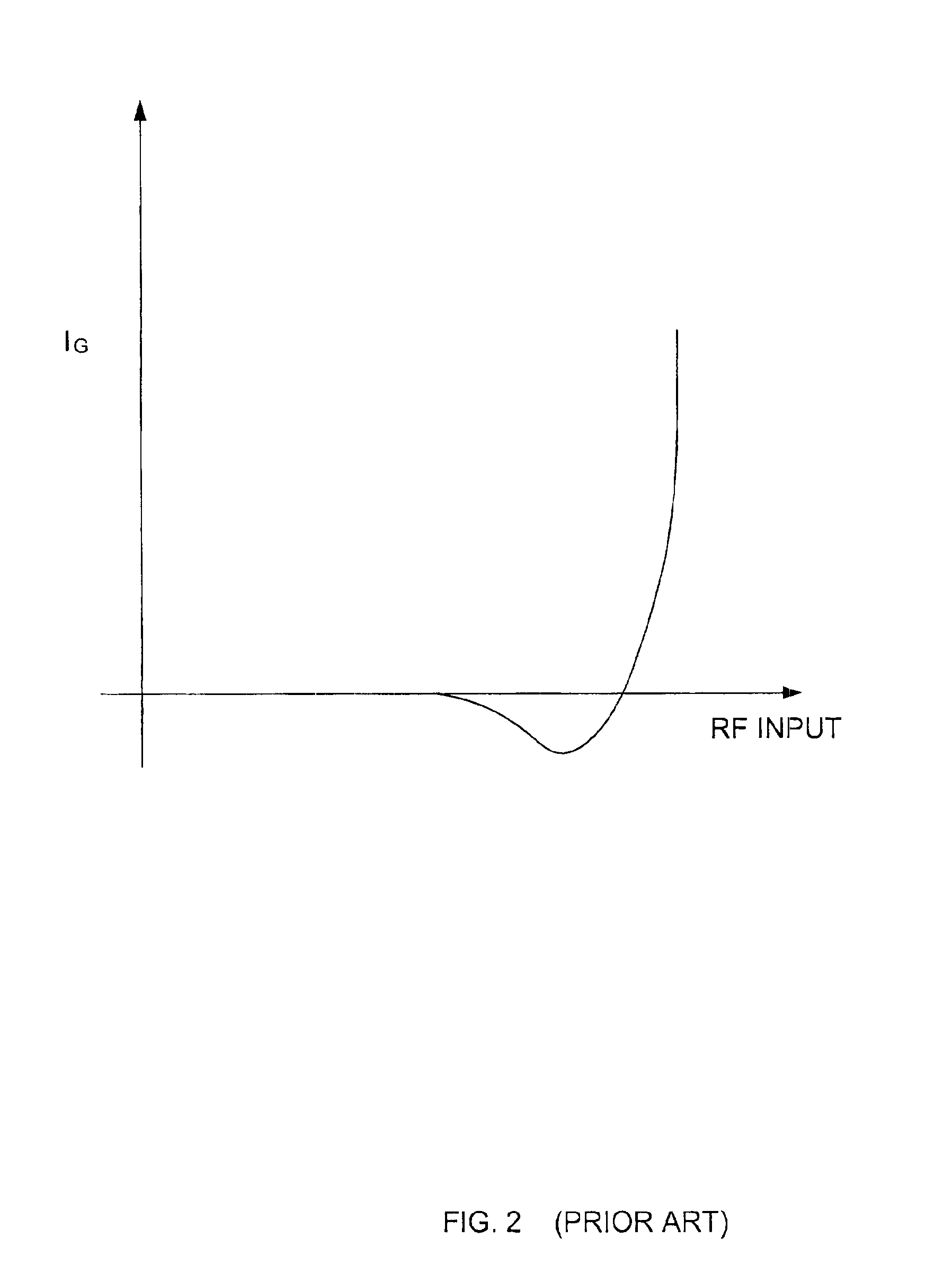Active element bias circuit for RF power transistor input
a technology of active element and gate bias voltage, which is applied in the direction of automatic tone/bandwidth control, high frequency amplifiers, and gain control, etc., can solve the problems of limited predistortion compensation ability to correct the distortion of the rf output signal caused by the variation in gate bias voltage in conventional rf amplifier circuits, and destroy the transistor device. , to achieve the effect of improving predistortion compensation and low impedan
- Summary
- Abstract
- Description
- Claims
- Application Information
AI Technical Summary
Benefits of technology
Problems solved by technology
Method used
Image
Examples
Embodiment Construction
[0015]In accordance with the a general aspect of the invention, the passive capacitor used for providing a ground path for the gate current in conjunction with the current limiting resistor in conventional gate biasing circuits (e.g., capacitor 40 in the gate biasing circuit 20 of FIG. 1) is replaced with an active circuit element which provides a low output impedance over the operating frequency bandwidth of the RF input signal. In this manner, the gate current will see only a purely resistive load throughout the signal frequency bandwidth, without also further introducing unwanted memory effect into the biasing circuit.
[0016]Importantly, while the concepts and advantages of the invention will now be described in accordance with an embodiment directed to gate biasing of a GaAs FET, the invention may be equally employed in biasing circuits for other RF devices having drive dependent gate currents. By way of non-limiting examples, devices such as a GaAs pHEMT may also have drive depe...
PUM
 Login to View More
Login to View More Abstract
Description
Claims
Application Information
 Login to View More
Login to View More - R&D
- Intellectual Property
- Life Sciences
- Materials
- Tech Scout
- Unparalleled Data Quality
- Higher Quality Content
- 60% Fewer Hallucinations
Browse by: Latest US Patents, China's latest patents, Technical Efficacy Thesaurus, Application Domain, Technology Topic, Popular Technical Reports.
© 2025 PatSnap. All rights reserved.Legal|Privacy policy|Modern Slavery Act Transparency Statement|Sitemap|About US| Contact US: help@patsnap.com



